Each month, we’ll shine the spotlight on a different NASM Certified Personal Trainer who’s making a difference in their community.
For September, we spoke with Ashley Williams NASM-CPT, FNS, and CES who overcame unthinkable obstacles, and in the process, became an inspiration to thousands of people around the world.
National Academy of Sports Medicine (NASM): Ashley, tell our audience a little about yourself, and how your Instagram page Chemo Diaries got started.
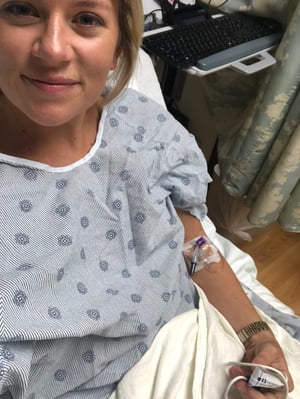
Ashley Williams (AW): In June 2015, I collided with a driver who ran a red light while under the influence. At impact, my knees hit the dashboard - the moment that altered the course of my life. The impact that’s believed to have instigated the growth of Aggressive Fibromatosis – a type of Desmoid tumor – a type of Sarcoma – a type of cancer.
The tumor grew to the size of a grapefruit behind my left knee
and the growth left me on crutches for nearly 9 months. After extensive
physical therapy to relearn how to walk and 19 months of chemotherapy, my
condition was finally deemed “stable” a few months ago.
In looking to the internet for support, I was shocked by the
lack resources and accounts that shared the honest path of a cancer journey.
So, I decided to start one myself. My “chemo diaries” started as an account
just for me - a way to document the daily ups and downs of my journey.
NASM: For many of us, it’s hard to imagine just how tough your 4-year battle must have been. How did you manage to keep your chin up, and stay positive?
AW: Four years is a long time! And unfortunately, the fight is never over. But I’ve learned a few things over the years to put my diagnosis into a positive perspective.
- Purpose. You can choose to look at any challenge as a misfortune, or as a blessing. I choose to view it as a blessing. Sure, some days are harder than others, and I’m definitely not immune to the depressive days of asking “why me?” But honestly, most days, I feel honored to be given a story that has the ability to impact the lives of other people. I pray I don’t waste it – and that I use the opportunity wisely.
- People. At the beginning, I made every attempt to protect people from the pain I was experiencing, which led to major emotional isolation. Once I learned the
importance of vulnerability, and allowed people into the pain of my journey, I
began to see the necessity of deep friendships and relationships in staying
positive throughout a major life challenge.
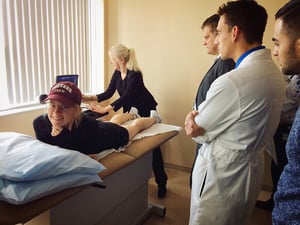
- Health. When
I lost my ability to walk, I realized how many simple things I’ve taken for
granted in my life. Physical therapy and relearning to walk was very difficult,
but it taught me to celebrate even the SMALLEST achievements. After regaining
my mobility and leaving physical therapy, I joined a gym. Here, I developed a
passion for not only maintaining my mobility, but increasing it. Which
ultimately led to a love for celebrating small victories in the gym.
- Forgiveness. Life is hard. I’m constantly plagued by thoughts of, “I should have handled my diagnosis better”, “I should have fought harder”, “I should have been a better example”. I really had to learn to be kind to myself, to give myself a break, and to forgive myself for not meeting all the “should’s” in my head.
NASM: Were you into health and fitness before the cancer struck? Or was your passion brought on by your determination to get better?
AW: I’ve joined gyms a handful of times throughout my life. My typical routine was to show up 2 or 3 times, then never show up again. My passion for health and fitness was definitely brought on by my determination to thrive through cancer.
NASM: When did you decide you wanted to become a certified personal trainer?
AW: My first year in the gym, I worked with several trainers (none were NASM certified). All of which were focused on having me lift more, do cardio longer, and build my glutes. None of these trainers listened to what I wanted.
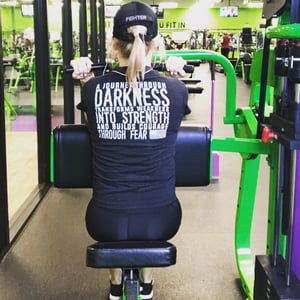
At the time, I was 6 months into my second round of chemo. I
was experiencing some pretty aggravating side effects: nausea, vomiting, burned
feet, losing hair, etc. I had received a workout plan from a trainer who
“specialized in disabilities”, but who was unreachable when I had a question,
but ultimately answered everything with “you have to push yourself”. I found myself altering the plan I was given, without really knowing if what I was doing in the gym was actually helping anything.
This is when I decided I wanted to become a certified personal trainer. I was tired of relying on people for my workouts, and wanted to understand how to put my own programs together.
NASM: Why did you go with NASM as opposed to another brand?
AW: In researching personal training certifications, it became evident very quickly that NASM is considered the top certification. I was also very excited about NASM’s specialization in Corrective Exercise, since leg mobility has always been my number one goal.
NASM: From the day you enrolled in a CPT program, to the day you earned your certification, how long was the process?
AW: 12 months. The process took a little bit longer for me, and NASM was extremely gracious in providing me an extension. One month after enrolling in the CPT self-study, my chemo treatment began affecting my ability to function, which also affected my ability to study.
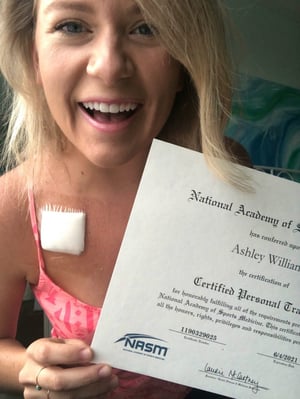
NASM: You also hold specializations in Corrective Exercise and Fitness & Nutrition. Why were you drawn to those? Are there any other specializations you’re considering to further your career?
AW: My goal is to help others overcome their challenges and trauma through a multidisciplinary approach. Ultimately, I’d love to use my personal experiences, my professional license, and my NASM knowledge to help other people who are trying to thrive through challenges. I currently hold an LCSW and work with individuals who have experienced trauma. As far as NASM, the Fitness and Nutrition specialization, in my mind, is a fundamental part of thriving. I was very excited about NASM’s specialization in Corrective Exercise, since leg mobility has always been my number one goal, and muscular imbalances have the ability to dramatically effect an individual’s quality of life.
NASM: Is there a niche of client that you’d like to train?
AW: Yes, I’d love to work with other individuals who are trying to thrive through challenges. Chemotherapy patients are obviously near and dear to my heart. I do not have any clients of my own yet, as I was recently certified. However, I was able to find an NASM Master Trainer in my area – and have been working with him to gain more knowledge and to benefit from his individualized plans for me. Working with him has inspired me.
NASM: How did you connect with the NASM Master Trainer in your area? Can you talk more about your experience working with him?
AW: Once I became NASM certified - I knew I wanted to focus on two things:
- Learn everything I can.
- Apply what I learn to my own muscular imbalances to improve my mobility long-term.
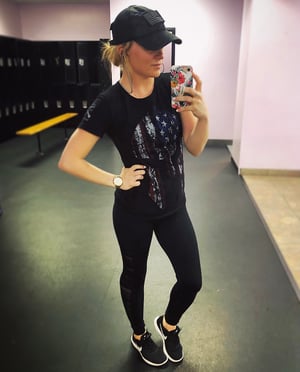
I knew the best way to do this would be to surround myself with individuals I could learn from. I did a little research on the gyms in my area, and found that an NASM Master Trainer with a CES specialization, worked at a gym within a reasonable distance from my house. After requesting an assessment, I learned that he had his first few openings for new clients in over a year. I could tell after my assessment that working with him would be worth the investment.
He had me doing extremely basic movements, some balance-focused,
some strength-focused and some light SAQ drills that targeted the smallest
underactive muscles in my leg. I didn't lift weights, I didn't do cardio, I
didn't even break a sweat – but the next few days I was sore in muscles I never
knew existed. He also equipped me with an easy stretching routine that focused
on lengthening my overactive muscles. All the while, helping to educate me and
show me how to put NASM theory into practice.
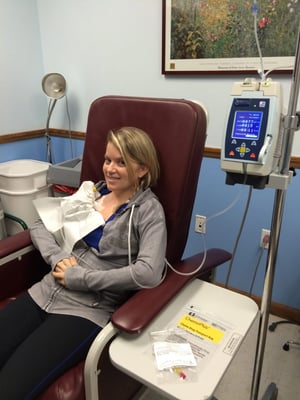
The progress may be small and slow moving, but I can already
tell a difference in my leg's range of motion. And on top of the physical and mobility gains, I'm most excited to be a recipient of the NASM culture – which is evident in the way my Master Trainer invests not only in my training, but also in my knowledge and understanding.
NASM: Do you have any words of encouragement for those who are struggling, either physically, emotionally, or both?
AW: You are strong. You can get through this. How amazing that you have been given an opportunity to deeply know and understand struggle. Allow this journey to motivate you and inspire you to help others who need a friend, who need a voice, or who need guidance. I know some days are hard. I know some days feel IMPOSSIBLE. I know you question, “Why Me?” But it is you for a reason. A world-changing reason. Be kind to yourself, give yourself a break, and keep moving forward. You got this.
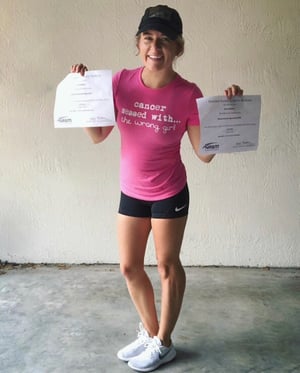
NASM: What’s next for Ashley Williams?
AW: Life! The past four years have been characterized by treatments and doctors. I’ve fought hard, but can finally close the book. Now I move forward enjoying life, and can hopefully use my personal experiences, my professional license, and my NASM knowledge to bring other people with me.
* * *
All of us at NASM wish Ashley continued success in fitness, in health,
and in everything she does. Thank you so much for answering our questions, Ashley!
You can follow Ashley’s inspiring Instagram page at instagram.com/chemo_diaries.
Do you know someone who might be worthy of a Q&A with CPT? Tell us about him/her by emailing Meiti.Prang@nasm.org. (The only requirement is that this person must be an NASM-CPT.)

















